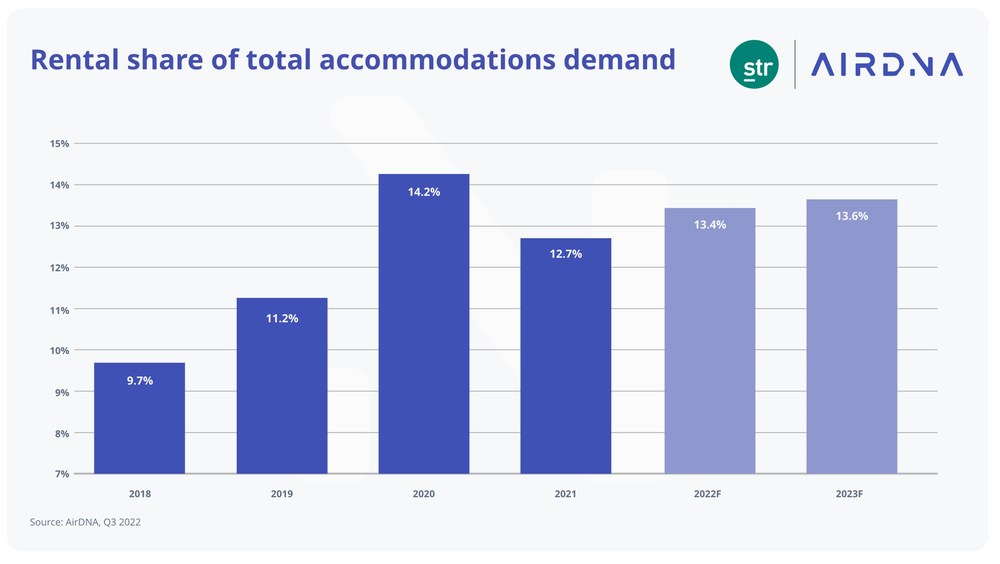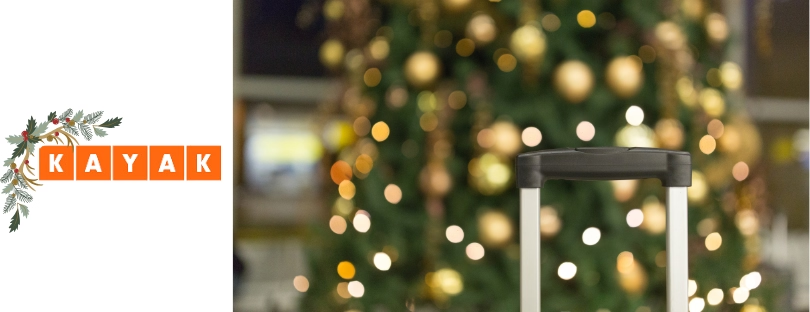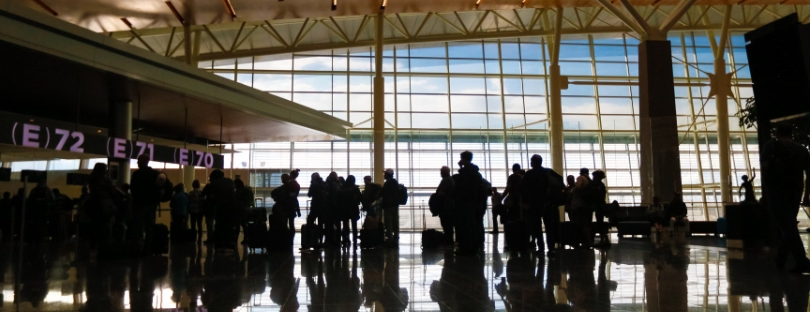
Competition for Leisure Guests Heats Up Between Hotels and Short-Term Rentals
A new joint report from hospitality data supplier STR and short-term rental analytics provider AirDNA shows that competition between short-term rentals and hotels has accelerated in the fight for leisure guests, with the price gap tightening and rental supply falling behind in urban markets. hotels vs vacation rentals
During the pandemic, the U.S. short-term rental sector used its supply flexibility to recover faster than hotels, especially in coastal and mountain destinations, pushing rentals’ market share to a record 17% of total lodging in summer 2020.
AirDNA and STR: Short-term rentals’ share of total lodging demand projected to rise
Hotels retargeted leisure guests to reclaim demand, focusing on urban areas, pushing short-term rentals’ market share back to below its pre-pandemic trajectory.
“During the pandemic, short-term rentals had an advantage over traditional hotels due to consumer perceptions of better COVID-19 safety,” said AirDNA Vice President of Research, Jamie Lane, “Now in 2022, hotels can compete on price and have claimed demand on key holidays where pre-pandemic, they typically lost out on leisure travelers.”
Hotels Lead in Cities hotels vs vacation rentals
In large cities, short-term rental supply contracted dramatically as demand dropped off in 2020, while government subsidies helped to reduce permanent hotel closures. As urban demand began to recover in 2022, hotels were ready to accommodate travelers, while urban rental supply remained 17% below 2019. With strict regulations limiting short-term rentals in cities like New York and San Francisco, which both lost 25% of their pre-pandemic supply levels, supply is unlikely to fully recover in these areas.
“Looking to the future, hotel supply will likely remain strongest in urban and suburban locations, with low development in coastal and rural areas due to higher barriers to entry, where short-term rentals will likely see more opportunity for growth,” said STR’s Vice President of Analytics Isaac Collazo.
A new STR survey of more than 1,000 travelers shows that value for money is an important factor for rental guests, even more than hotel guests. Despite the perception that rentals are cheaper, in 2019, hotels and comparably-sized rentals were priced around the same, except in urban locations. In large cities, hotels were priced 42.9% higher than rentals, but that gap has closed to 26.6% in 2022. Hotels are now offering lower rates than rentals in all location types except urban and coastal resorts, where the difference is 10%.
While rentals’ market share is highest in coastal and mountain or lake destinations, in urban and suburban locations, their share has flattened or declined. Rentals should continue to grow their market share, albeit at a slower pace than pre-pandemic, led by expansion in resorts and small towns less well served by traditional hotels.










